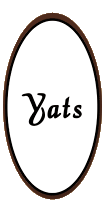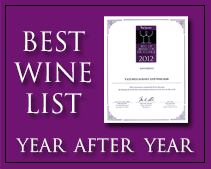Torrontés is the quintessential Argentine white wine. Philippines wine supplier Manila wine shop discusses wine by the grape variety Torrontes.
October 19, 2010
Torrontés is the quintessential Argentine white wine. It’s typically what is known as a varietal — meaning it’s made primarily from one variety of grape, the Torrontés grape, rather than a blend of varieties of grapes. (Another example of a varietal would be Chardonnay, while an example of a blend would be Chardonnay-Viognier.) While Torrontés blends can be found (Torrontés-Chardonnay, for example) it’s much more common as a varietal.
Because Torrontés wine usually is made just from the Torrontés grape, the big personality and character of that grape shine through in the wine. That means that when you try Torrontés for the first time, your reaction probably will be something along the lines of “What was that?” or “I’ve never tasted anything like that before,” or just “Wow.”
I remember the first time I tasted Torrontés. I was living in Buenos Aires, and a friend wanted to meet for dinner at a little restaurant/wine bar. As we sat outside under the stars eating empanadas — savory Argentine pastries stuffed with spicy ground beef and hard-boiled eggs or ham and cheese — I took a sip of the white wine my friend had ordered, and time seemed to stop. The wine was amazing — fruity, floral and utterly charming. I was in love. Years later, when I was back in the U.S. and tried Torrontés again, those memories came rushing back. It was like drinking Argentina.
So, if you haven’t tried Torrontés, you’re probably wondering what it tastes like. The answer is that every Torrontés is different but, in general, it has a very floral bouquet — almost like perfume. It is crisp and fruity — think notes of melon and tropical fruits such as pineapple — with a hint of mineral finish. It is almost always very dry.
History of Torrontés
So, how did Torrontés wine as we know it today come to be?
The history of the Torrontés grape is a bit of a mystery. While some Argentines claim the grape is native to their country, some wine experts believe that it was brought to the New World many years ago by settlers from Spain. Recently, scientists did some DNA testing on the three varieties of Torrontes grape that grow in Argentina — Torrontés riojano (the grape used to make most Torrontes wine), Torrontés sanjuanino and Torrontés mendocino — and found that they all were likely descended from the Muscat of Alexandria grape, which is used to make muscatel wines.
In any case, Torrontés truly is uniquely Argentine. No other country in the world produces a “worthy Torrontés,” according to a quote on WineSur.com, from Doug Frost, a Kansas City wine consultant and one of only a few people in the world to hold both the Master of Wine and Master Sommelier titles.
Mendoza Wine Region
Where Torrontés Wine is Produced
The province of Mendoza is the most important wine-producing region in Argentina — and it produces about 80 percent of the country’s wine, including much of the Torrontés. Mendoza sits in the middle of the country, bordering Chile, and has a dramatic backdrop of the snowcapped Andes Mountains. Mendoza also is known for its lakes, rivers and lush greenery.
However, the best place to grow Torrontes grapes — which are round and medium-sized, yellowish green or gold in color — might be the province of Salta, a rough, mountainous land of red earth and shocking blue skies in northwest Argentina. The province boasts the colonial city of Salta, which is the starting point of the famous Train to the Clouds. Torrontes also is produced in the province of La Rioja.
The reason that Torrontes grapes do so well in these provinces in Argentina is partly because of the high altitude, which makes for cooler temperatures during the growing season and larger variations between day and nightime temperatures. This allows the grapes to develop more slowly with more concentrated flavors. In any case, it could be argued that these provinces in Argentina offer near ideal conditions for producing Torrontés.
What makes Torrontés so unique?
You might be wondering what makes this wine so distinctive — what makes it different from a Viognier, a Chardonnay or any other nice white wine?
* Floral aromas — The Torrontés grape is one of the grapes — along with Muscat and Riesling — that contains high levels of terpenes, compounds that give the wine its floral aroma. The floral notes that can be found in many Torrontés wines include roses, orange blossoms, lavender, lilac and bergamot flowers. Often, putting your nose in a glass of Torrontés is like smelling a bouquet of fresh flowers.
* Dryness — Unlike some other wines that have high levels of terpenes and a floral nose (in wine, “nose” just means its aroma) Torrontés typically is bone dry. This dryness*, combined with Torrontés characteristic acidity balances out those floral aromas and fruity notes to create a wine that is light and crisp. (On the other hand, when you combine floral aromas with sweetness — as in some Rieslings, you can have a wine that’s too overpowering for some wine drinkers.) *Just a note: there actually are some sweet Torrontes wines out there, but most are quite dry.
* Argentine terroir – The Argentine terroir — a combination of the soil, altitude, weather and other elements — helps to make Torrontés unique. Of course, different Torrontés grapes are grown in different locations around Argentina by different farmers. But because Argentina is the main country that produces this white wine, the taste of Torrontés embodies this country of rugged gauchos and elegant tango dancing and amor.
What the Critics Say About Torrontés
For quite a few years, Torrontes has generated a lot of buzz in the wine world, and it is a darling amongst some critics. As Argentine wine sales continue to grow, especially in the United States, and Argentine Malbec has become quite popular, many predict a bright future for Argentina’s other wine, Torrontes.
At Wine-Pages.com, one writer speculated that Torrontés could become “the new Pinot Grigio.“ According to Wine Library TV, Torrontes has “stormed onto the scene” in the U.S. and WSJwine called it “Argentina’s new white sensation.” (A side note: Torrontes isn’t really “new” at all, but it is new to many wine lovers in the U.S. who are just now discovering this crisp white wine.)
Not everyone loves Torrontés though — in fact, some critics dismiss it as a nice little wine that’s not ready to compete with the big boys. One naysayer quoted in an article called it “too idiosyncratic” to ever be a mainstream hit.On FoodandWine.com, wine editor Ray Isle wrote that many Torrontés wines he had tasted in the past were “insipid” but “that seems to be changing” and that Argentina’s white wine actually offers a very good value at a good price.
How to Buy Torrontés Wine
You should know that Torrontés wine most likely will not be available at your average grocery store. But, if you seek out a knowledgeable wine seller, you should be able to find a selection of at least a few different types of this wine. There are many winemakers that produce Torrontes wine. My personal favorite is Susana Balbo Crios Torrontes. (Susana Balbo is a pretty famous Argentine winemaker known as the “Queen of Torrontes.” Others you might enjoy are Alamos Torrontes, Don Rodolfo Torrontes, Loca Linda Torrontes and Etchart Torrontes. Most bottles of Torrontes wine cost between $10 and $15, though you can find some that cost less and some that cost more. That makes Torrontés one of the more affordable white wines out there. You can check the Reviews section of TorrontesWine.com for more recommendations and reviews.
One more note about buying Torrontés wine: it typically does not age well, so you’ll likely be looking for a bottle with last year’s date on it. I is usually suggested that Torrontes be consumed within a year after it has been bottled. When it comes to Torrontes, you want to drink it young.
So, enjoy your Torrontes — and here’s a toast to Argentina’s white wine!
Photo credits — White Wine — Kyle May, Flickr and “Arroyos de Mendoza” – fainmen on Flickr and Bottle of Wine — seannaber, Flickr
Wine Review: Crios de Susana Balbo Torrontés 2009
Filed Under Torrontes Reviews, Wine Reviews | Leave a Comment
I am in love with Crios de Susana Balbo Torrontés. I have been drinking it for several years, and it’s a little different each year. The other day, I picked up a bottle of the 2009 Torrontés at my favorite local wine store. I drank it on a beautiful, sunny late Friday afternoon in June.
My review: This wine has beautiful aromas of jasmine and nectar — really, opening a bottle is like walking into a perfume shop. It has notes of peach, white pear and lush melon, balanced with a beautiful, crisp acidity that makes your tongue tingle. It is an absolutely lovely wine — for summer or any time of year.
More about this wine: This wine is made from grapes from 31-year-old vines growing in Cafayate, in the province of Salta in Argentina — known for being possibly the best place in the world to grow Torrontés because of its high elevation, rocky soil and cool nights. It’s 13.5 percent alcohol and is fermented in 100 percent stainless steel, so it’s unoaked.
About the winemaker: Susana Balbo is a very famous woman winemaker from Argentina. She has been working in the wine industry since the early 1980s, and started making wines under her own name about 10 years ago. The Crios line — which means “offspring” in Spanish — is a line of lower-priced, but no less tasty, wines from Susana Balbo.
Cost: I paid about $15 for it, but I hear that it can be purchased for less — about $12 — at certain stores or online.
Pairing: Well, I made empanadas to go with this wine — when I think of Torrontés, I always think of empanadas. I made vegetarian empanadas, but popular Argentine combos are ground beef and onion with green olives and slices of hard-boiled egg or ham and cheese or onion and cheese. This wine works really well with spicy foods, so if you serve it with empanadas, I recommend making them a little bit spicy.
Advice: Be sure not to over-chill this wine (as with just about any white) because over-chilling can really kill its floral aromas and dull its taste. Also, make sure to drink this wine young — all Torrontés should be consumed within the first year after it’s bottled.
In summary, I loved this wine (in case you couldn’t tell) and highly recommend it. I think it would please both wine drinkers who love dry wines as well as those who prefer sweet whites. (Though it is a pretty dry wine, the floral fruitiness of it would likely appeal to those who like sweet wines.) It has about five grams of residual sugar, but its acidity balances the wine out perfectly.
Dry White Wine
Filed Under Dry White Wine, Dry Wine vs. Sweet Wine | 1 Comment
Dry White Italian Wine
On a warm day, there’s nothing quite so nice as to sit on an outdoor patio in the sunshine and sip a chilled dry white wine — a crisp Sauvignon Blanc, Chenin Blanc or Torrontés. But what exactly is a dry white wine? It turns out there’s a lot more to that question than you might think.
The (incorrect) conventional wisdom is that dry wines have no residual sugar — and that most good white wines (save, say, some German wines and dessert wines) are dry. The truth is that all wine — even the driest of the dry — has some residual sugar. That’s because certain types of sugars are impossible to convert to alcohol during the fermentation process. The Wine Curmudgeon has an excellent lesson on this — it’s the best simple explanation of residual sugar I’ve read. (It’s about time someone wrote about this!)
According to The Wine Curmudgeon, winemakers are fairly secretive about their wines’ residual sugar content (and don’t put it on the label) because they know that Americans believe that good wine is dry wine and will run the other way if they see any mention of residual sugar. (Well, okay, that’s my paraphrasing of what he said.) It’s because those of us who have had the unfortunate experience of drinking White Zinfandel or any bad jug wine tend to associate sweetness with junk wine.
The sweetness of a wine is measured in grams of sugar per Liter of wine, and the minimum amount of sugar that would be in the driest wine tends to be about 1 gram per Liter. (In contrast, a sweet wine/dessert wine could have 45 to 450 grams of sugar per Liter — or more.)
This whole matter of dry white wine is complicated further by a few other facts:
* Wines with higher alcohol content tend to taste sweeter than wines with a lower alcohol content.
* Fruity wines can taste sweeter to some people’s palates; it’s likely because our minds associate fruit with sweetness.
* A wine’s acidity tends to balance out its sweetness; the higher the level of acidity, the drier a wine might taste.
That said, if you’re looking for a very dry white wine, here are some suggestions:
Muscadet from the Loire Valley in France — A Muscadet is one of the driest white wines out there, and is made from the Melon de Bourgogne grape. Muscadet wines are very, very dry and light, with a bit of effervescence that makes them very refreshing. If you are looking for a very dry white wine, Muscadet is your wine.
Albariño from Galicia in Spain — Albariño is made from the Albariño grape grown in northern Spain and also in Portugal, where is is called Alvarinho. This wine’s high acidity and low levels of residual sugar make it an excellent choice for anyone looking for a truly dry white wine.
Sauvignon Blanc from New Zealand — Sauvignon Blanc from New Zealand, especially the Marlborough region, can be light, crisp and dry with bracing, grassy, herbal and grapefruit notes. It’s a very good dry wine.
Brut Natural Champagne or sparkling wine — The levels of dryness on the labels of sparkling wines can be confusing, but Brut Natural is definitely the driest of the dry sparkling wine. Any sparkling wine labeled Brut will be quite dry, but a Brut Natural is the driest within that category.
If you want dry white wine that actually tastes dry, here are some wines you might want to avoid, even though they might technically be dry:
Viognier — Though Viognier usually is dry, it can taste sweet because it has a heavily perfumed nose and lush notes of melon and other sumptuous fruits. It also tends to have lower levels of acidity.
Gewürztraminer — Even though there are dry Gewürztraminers out there, they tend to be fairly high in alcohol, which can make them taste sweeter, and they have an exotic, flowery spiciness that can seem heavy to some wine drinkers.
Of course, every palate is different, so you might have to try a number of different dry white wines to find the ones that best suit your tastes.
Photo credit: HarshLight, Flickr
Cheap Wine
Filed Under Buying Wine, Wine Deals | Leave a Comment
Cheap Wine
Is it possible to get good cheap wine? Yes. Many wine experts say that for $10 a bottle — or even less, in some cases — you still can get a good, palate-pleasing wine. You just have to know what to look for.
If you really love wine, and you go to any grocery store and grab the first under-$10 bottle of wine you see, you are likely to get a bland mass-produced wine that will leave you disappointed. Instead, you should do a little legwork to find some wines that have what wine lovers call a high quality-to-price ratio (QPR). Wines with high QPRs are good values — you get more bang for your buck.
So, I recommend that you go to a local wine shop that is known for having knowledgeable staff (some do and some don’t, so ask your wine-loving friends) and ask them to tell you about their best values. At smaller stores where the proprietors are passionate about wine, you can learn a lot and get some great recommendations for the best cheap wine. The staff also should be able to give you advice on what food will pair well with your value wine.
Another good strategy is to find out whether any of your favorite wine retailers have a “wine of the week” or other special, and see if you can get on their e-newsletter or Facebook page to be alerted to any sales. Wine retailers sometimes receive special deals on certain wines that they can then pass on to their customers.
But, if you don’t have the guidance of a knowledgeable wine seller to help you pick a wine, here are some tips:
* Steer clear of “hot” wines — the ones that everyone’s talking about. I’m not saying there are no good values to be found here, but, as a general rule, once a certain type of wine or region is “discovered,” prices tend to go up accordingly. A good example of this phenomenon is Sauvignon Blanc from the Marlborough region of New Zealand, which commands premium prices. A study by economists also found that critics’ rating played a role in price — every one-point increase in score given to a wine by Wine Spectator magazine correlated with a price increase of 83 cents per bottle.
* Stay away from varietals made from hard-to-grow grapes. A prime example of this is Pinot Noir. Yes, Pinot can be a lovely wine, but the grapes are notoriously difficult to grow and need a lot of care and personal attention. This means that a “great value” Pinot Noir might cost about $20 — compared with $8 to $15 for a “great value” in another varietal.
* Look at countries, regions and varietals known for good value. Right now, Spain and Argentina and Chile often come to mind when you think of getting a good wine value — and for good reason. For reds, why not consider a Tempranillo from Spain, a Malbec from Argentina or a Carmenere from Chile? For whites, you could choose a Torrontés from Argentina, a Grüner Veltliner from Austria or a Vinho Verde from Portugal.
* Shop at a local winery. If you live in an area where wine is made, try shopping at a local winery. While most wineries sell at full retail prices, you might be able to find a sale or a featured wine that’s discounted. If you’re going to drive to a winery, it makes sense to taste the wine first (most wineries have a tasting room) then buy the wines you like in bulk (which should give you even more of a discount.)
* Consider buying by the case. Ask if your wine seller offers discounts by the case — many offer a discount of 10 to 15 percent for a case compared with what you’d pay if you bought by the bottle. And if you are going to buy by the case, either mix it up to try some new wines, or buy multiple bottles of wines you already know you love.
Cheap Wine Recommendations
If you’re looking for the best cheap wine, well, that depends on your tastes. You probably will have to try several cheap wines before you find one that you love at a price you love. Here are a few recommendations to get you started:
* Cheap Red Wine – One of my favorite cheap red wines is Altos Las Hormigas Malbec from Argentina, which sells for a little over $10 a bottle. I first tried it on my honeymoon in Costa Rica (where, of course, it wasn’t cheap because it was on the menu at a fancy restaurant and was marked up like crazy.) When I got back to the U.S., I was thrilled to find it at my favorite wine store for a surprisingly low price. I also like Goats do Roam in Villages, a South African red blend that sells for $10 to $12.
* Cheap White Wine — For a cheap white wine, try a bargain Torrontés, such as Alta Vista Torrontés, which is about $10 a bottle. Or, try Bloom Riesling, which can be found at places like World Market and often costs less than $10. (I’ve seen it for $7-something.) It’s a nice simple summer wine.
* Cheap Sparkling Wine — When it comes to sparkling wine, cheap is relative. But there’s little doubt that the best values in sparkling wine are found in Spanish cava. (Cava is the name for Spanish sparkling wine.) My favorite bargain cava is Marques de Gelida Brut Cava, which sells for about $15.
Buying Cheap Wine
One of the best places to find good cheap wines is at a wine store with a knowledgeable, helpful staff. They are going to have wines that will be quite a bit different than what you see on your grocery store shelves. If you don’t mind buying your wine from a big retailer, which isn’t likely to have the intimate knowledge and is more likley to have mass produced wines, consider Costco or Trader Joe’s — which is absolutely famous for its ultra cheap Charles Shaw wine, nicknamed “2-Buck Chuck,” which has sustained many a poor wine lover who couldn’t afford anything more expensive. There are some good wines to be found at Trader Joe’s, but it’s hit or miss, so you just have to try them to find one you like. Or, hunt around at bargain grocery outlets — where, The Wine Economist notes, some great bargains can be found if you know what to look for. (The author’s wine-savvy friend found a good New Zealand Sauvignon Blanc, which should have been selling for at least $10, for $3.99.)
To buy cheap wine online, consider BinEnds.com, an online discount wine seller. When buying cheap wine online, look at the selection first, then do a little reading online and look for some reviews to make sure that the wine you’re considering is a good wine, and that it’s not cheap because there’s something wrong with it. Before you buy wine online, remember to check for any online coupons that can get you a discount of 5 to 20 percent or more.
So, just treat your search for cheap wine as a treasure hunt. You might have to taste many duds — or wines that just aren’t for you — before you find that gem. But that’s all part of the fun.
Photo credit: Joe Shiabotnik, Flickr
White Wines
Filed Under Wine Basics, white wines | Leave a Comment
In “Ode to Wine,” Pablo Neruda poetically referred to white wine as “wine with topaz blood.” Indeed, “white” is a pretty bland description for wines that run the gamut from springy yellow to deep amber in color and can taste of anything from lemon to gooseberry to toasted caramel.
White wines sometimes are overshadowed by their red counterparts, but there’s a lot to learn about them. In fact, there’s so much to say about white wines that a book could be written on the topic — and many have. This isn’t meant to be an exhaustive piece on white wines, but instead a very brief overview for the beginner.
Semillon Blanc Grapes
How are White Wines Made?
White wines typically are made using white wine grapes, of which there are hundreds of varieties and which range in color from light yellow green to deep golden yellow. Examples of common white wine grapes include:
* Chardonnay grape
* Pinot Gris grape
* Riesling grape
* Sauvignon Blanc grape
* Semillon grape
* Seyval grape
* Viognier grape
However, occasionally white wines are made using red wine grapes, without leaving the skins in contact with the juice so the color of the skins does not bleed into the juice. Examples would be White Pinot Noir or White Merlot. In fact, many white Champagnes and sparkling wines are made using red wine grapes. (A Rosé wine, on the other hand, usually is made by using red wine grapes and leaving the skins in contact with the juice for a short time, usually a few days, to create a color somewhere between salmon and cranberry. Rarely, Rosé also is made by mixing red and white wines. Rosé had a bad name for many years in the United States because wine drinkers assumed that a pink wine would be sweet and low-quality, but it is really coming into its own lately. There are many nice, dry Rosés available now.)
Mosel Wine Region, Germany
Where White Wines Are Made
White wines are made all over the world and the way they taste is determined by what grapes are used, where those grapes are grown (what the French call terroir), whether and how the grapes are blended, the winemaker and how the wine is made. Place is a very important aspect of all this — and place contributes greatly to a wine’s overall character. For example, Torrontés grapes thrive in rugged, windy, mountainous conditions in certain parts of Argentina, and that is why that country has become the only one that produces a such a lively, charming Torrontés. Another example is the Marlborough region on New Zealand, where ocean breezes and cool nights help to create bracing, intense Marlborough Sauvignon Blanc, which has become world famous.
Here are some of the countries and regions known for producing distinctive white wines:
California, U.S. — Of course, the most famous wine region in California is the Napa Valley, which is located on the coast, just north of San Francisco. Other wine regions in California include Sonoma County, Mendocino County, Marin County, San Luis Obispo and Santa Barbara. The white wine that comes to mind when most people think of California is Chardonnay, but California produces many other types of white wine too.
New Zealand — New Zealand’s most famous wine region is Marlborough, where some of the world’s best Sauvignon Blanc is made. Other wine regions include Auckland, Nelson and Central Otago. In addition to Sauvignon Blanc, New Zealand also is known for its Chardonnay.
France — In France, several regions are known for making superb white wines. The region of Burgundy is famous for its white Burgundy, which is made from Chardonnay grapes. (In France, wines often are named for the growing region rather than the variety of grape used.) The Loire Valley is known for its whites, including Chenin Blanc. And And many wine lovers consider the region of Alsace to be nirvana for white wines. On the border with Germany, Alsace produces wines that share characteristics with some German wines, and it’s known for crisp, dry Riesling and heady, fragrant Gewürztraminer.
Germany — The Mosel region is one of Germany’s 13 major wine regions, but might be the most famous one throughout the world. Its steep slopes, cool temperatures and slate-laden soil allow the region to produce light, crisp Riesling that has a distinct minerality.
Italy — Though Italy is almost synonymous with red wine in many wine drinkers’ minds, the country produces some excellent white wines too. Italy’s biggest white-wine producing regions are Veneto, Trentino Alto-Adige and Friuli. Italy’s most famous white wine would have to be Pinot Grigio (known as Pinot Gris in France). Other Italian whites include Verdicchio and Tocai Friulano.
Argentina — Argentina’s most famous wine region is the province of Mendoza and, of course, Argentina is known for its signature white wine, Torrontés. But, Argentina produces many other white whines, too, including Chardonnay, Chenin Blanc and Semillon.
Chile — Chile has several wine regions, but its most well known is Valle Central, which is not too far from the Argentine wine region of Mendoza. Chile produces a lot of Chardonnay and Sauvignon Blanc.
Glass of White Wine
White Wine Characteristics
There are thousands of types of white wines available — both varietals (wines made primarily from one type of grape) and blends. White wines also run the gamut from bone dry to dry to off dry to sweet. Here is a list of some of the more common white wine varietals (and keep in mind that these are all generalizations — many, many factors go into making a wine what it is and wines of the same varietal often differ greatly from each other) and their characteristics:
Chardonnay — Chardonnay is a varietal that is greatly influenced by the location where the grapes are grown and the style in which it is made. Common notes that can be found in some Chardonnays are green apple, pineapple and honey. Chardonnay can be made oaked or unoaked — and oaked Chardonnays can have notes of vanilla, nuts and toasted caramel.
Sauvignon Blanc — Sauvignon Blanc is one of the most popular white wines, yet when it is made in a certain style, it is sometimes referred to by wine experts as “aggressive” and “in-your-face.” Sauvignon Blancs in that style are often described as “grassy” or herbal, with notes of grapefruit and gooseberry. On the other hand, Sauvignon Blancs can be made in a much softer style, and those often have notes of melon and passionfruit.
Pinot Grigio (Pinot Gris) — Pinot Grigio typically is a light, crisp white wine that usually is not aged in oak. In some cases, it can have a slight pinkish tinge to it. Notes that might be found in a Pinot Grigio include lemon, nectarine, guava and honey.
Chenin Blanc — Like other wines, but maybe even moreso, Chenin Blanc is a reflection of the place where it was produced. A Chenin Blanc from the Loire Valley in France, for example, will taste very different from one from South Africa. Perhaps the word most commonly used to describe the Chenin Blanc grape is “versatile.” It is used to make dry or sweet wines and sparkling wines. Depending on the style, Chenin Blanc can have notes of citrus, honey, hay, apple or tropical fruit.
Riesling — Rieslings are known for having a floral aroma (think rose, jasmine or orange blossom), and they can range from dry and crisp to sweet. Notes commonly found in Rieslings include citrus, orange peel, green apple and guava. Some aged Rieslings are considered “challenging” for inexperienced wine drinkers because they may have notes of petrol or kerosene, which is caused by a compound that develops as the wine ages.
Gewürztraminer — Gewürztraminer is often off-dry and can have a heady aroma of rose petals and spice. Notes commonly found in Gewürztraminer include rose, lychee and spice. Some critics brush these wines off as not very complex, but they are fairly popular.
And here is a list of white wines that are less common, but that you might want to try if you’d like to expand your repertoire:
Torrontés – Torrontés is Argentina’s characteristic white wine. It has floral aromas, and it’s crisp with tons of character and notes of tropical fruits such as pineapple and guava.
Viognier — Viognier is a plush wine, that smells of flowers such as ylang ylang and has notes of peaches and apricots. Its most interesting characteristic might be its silky mouthfeel.
The wine shop in Angeles Philippines Clark Freeport Zone Pampanga as well as other wine shops, wine bars and wine outlets in Subic and Manila are wells stocked with interesting selections of many kinds of wine from various producers covering a wide range of prices. Of particular interest to wine lovers is the depth of vintages of wine available at the wine shop, wine bars and other wine outlets of Yats Wine Cellars in Philippines.
As a wine collector, hobbyist or someone in the wine trade, are you concerned or interested about this also? If so, please stay tuned in to Yats Wine Cellars’ web site to stay abreast of things to do with wine in the world.
News and pertinent information about wine trade, wine appreciation, wine shops and outlets, wine and food pairing, wine making, viticulture, vintages, climate conditions affecting wine, new and revived wine regions etc can be found here in this section. Yats wine Cellars is much more than a Philippines wine supplier with a few wine shops, wine bars and wine outlets in Philippines where clients can buy good wines in Manila, Angeles City, Subic and Clark Philippines. Yats Wine Cellars is also a rich source of information for the convenience of the growing community of wine lovers, wine connoisseurs and hobbyists in Philippines. Wine lovers in Manila, Subic, Pampanga, Angeles City, Clark Philippines can enjoy fine vintage wines in any of Yats Wine Cellars wine shopping outlets, wine bars, nightlife spots, wine shops and wine restaurants.
You are welcome to post your comments and questions about any topic related to wine on http://www.YatsWineCellars.com or email Wine@Yats-International.com with your comments, suggestions, questions, purchases or inquiries on wine and wine-related topics.
Source: http://torronteswine.com/











